A Hidden Gem in Historic New Orleans
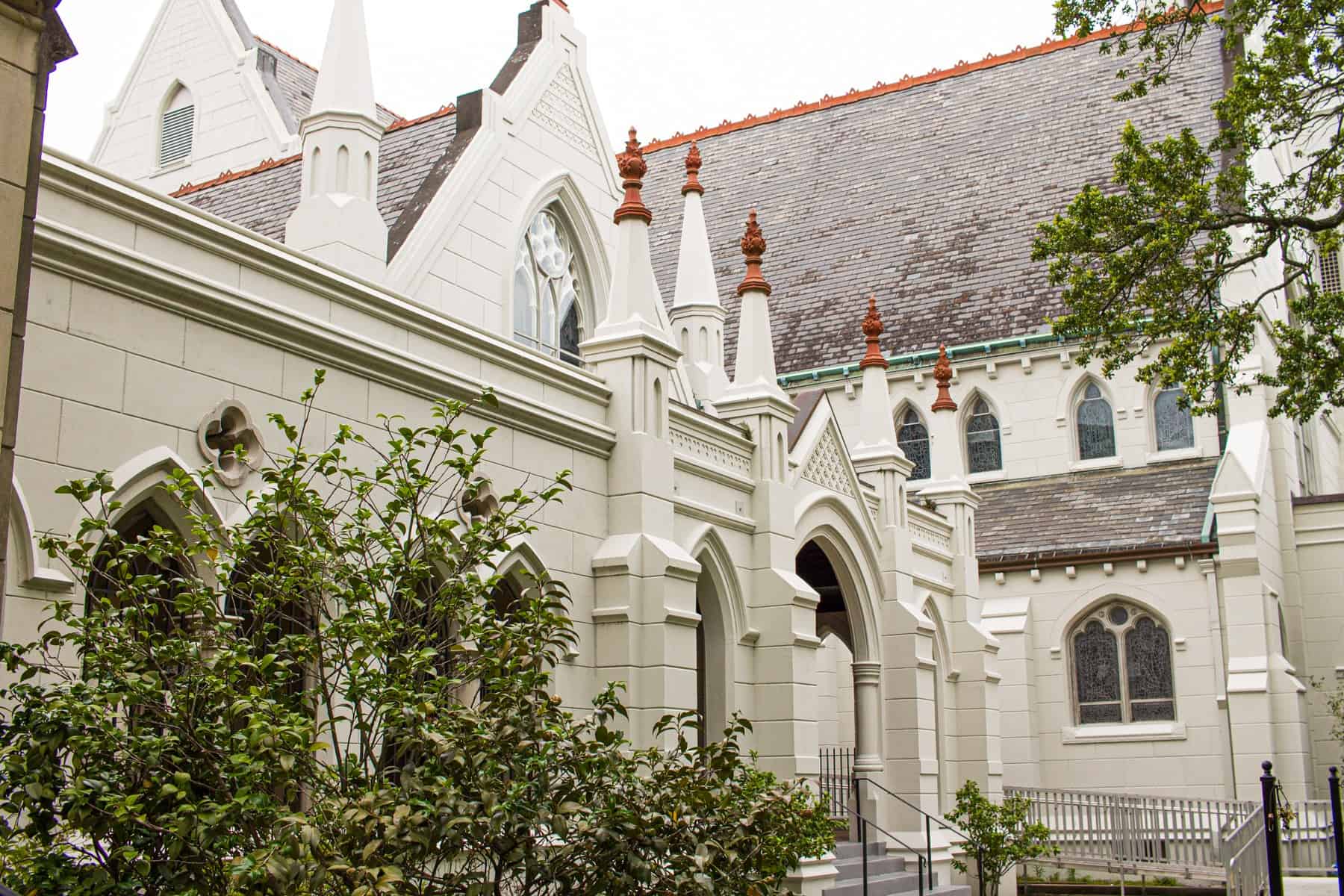
Christ Church Catheral in New Orleans, USA.
Architectural encounters line the old streets of this charming southern city
By Mary Rooney Armand
Contributing writer
Photography by Cameron Armand
Historic New Orleans is overflowing with culture, history and, believe it or not, churches, which offer a different kind of destination for visitors to the eclectic city.
Growing up in historic New Orleans, a town associated with the French saying “laissez le bon temps rouler” (let the good times roll), Mardi Gras and Bourbon Street, it was easy to overlook the beautiful, timeless churches lining the old streets.
A discovery on St. Charles Avenue in historic New Orleans
During a recent Mardi Gras parade while chaperoning my daughter’s band through Uptown New Orleans, we stopped for a few moments on St. Charles Avenue in the Garden District.
The Garden District, well known worldwide, is home to historic mansions, huge live oak trees, and dark green streetcars continuously rolling by. The over 100-year-old oak trees are a sight to behold with their indigenous moss hanging and large climbing branches sprawling across the avenue.
I looked up and protruding through the oak tree canopy with dangling multicolor beads, was a large, white church. As I examined the architecture of the vast building, I wondered how it had gone unnoticed to me.
Determined to discover the roots of this spectacular church, I snapped a mental picture of my new discovery.
Most Popular


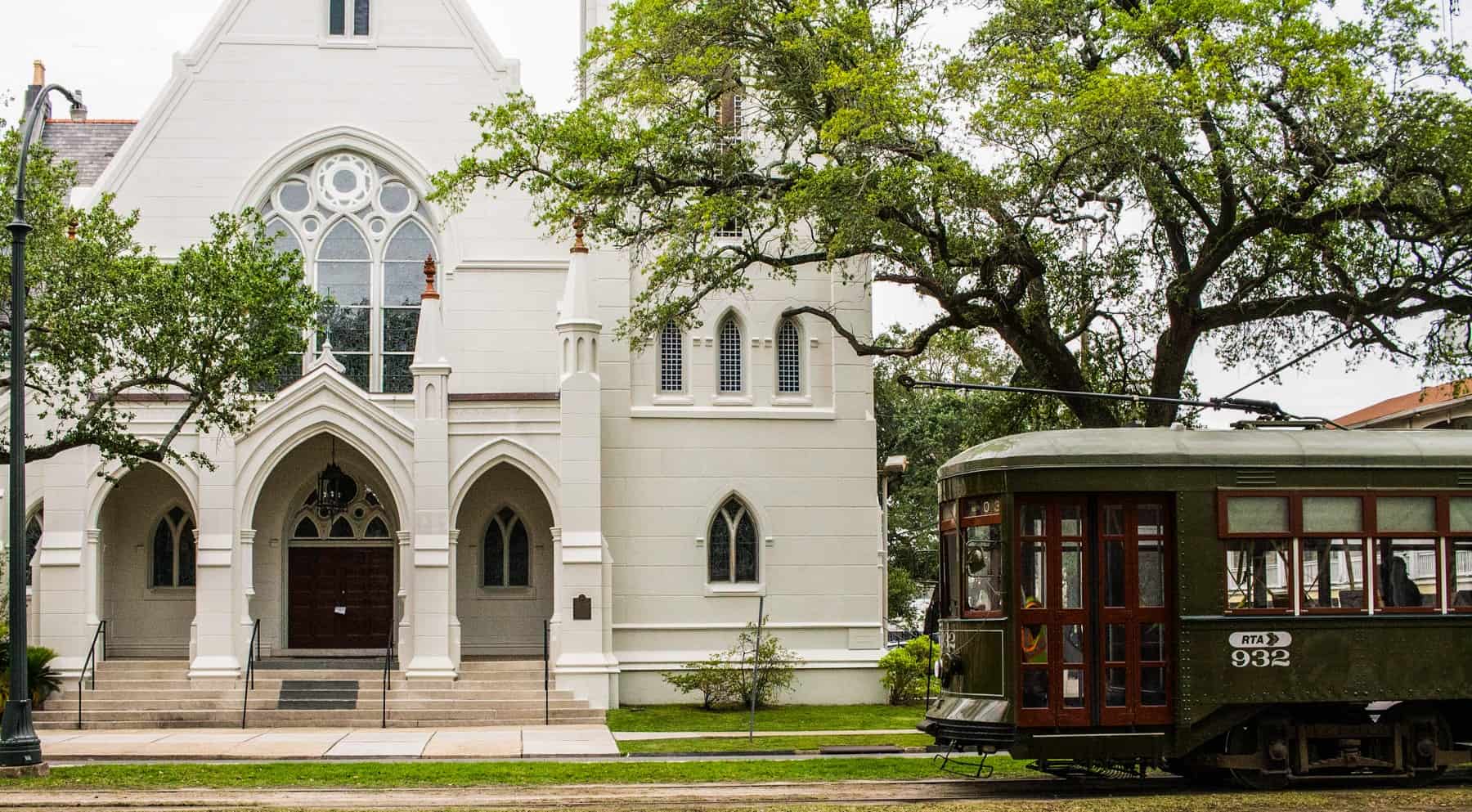
Christ Church Cathedral was founded, and services were held in public buildings until 1816 when the first church was erected on the corner of Canal and Bourbon Streets.
Faith arrives in New Orleans
After a few conversations and research, I discovered the sprawling, eye catching building was Christ Church Cathedral. It was the first non-Catholic church founded by Protestants who arrived in New Orleans after the Louisiana Purchase in 1803.
Prior to the Louisiana Purchase, settlers who brought faith and traditions of worship to Louisiana were the Roman Catholics. Catholicism was introduced during the 18th century in association with the King of Spain and the Roman Pope.
In historic New Orleans’ core, the French Quarter, stand two reminders of Catholic tradition, St. Louis Cathedral and the Ursuline Convent which are considered to be two of the oldest structures in the Mississippi valley.
St. Louis Cathedral forms the center of the French Quarter landscape facing the Mississippi River and flanked by a green square surrounded by iron fencing topped with distinctive posts. The original Church of St. Louis was erected on the site in 1727 and was named after King Louis IX of France. However, that building was completely burned in a devastating fire in 1788. The current building which still holds mass was completed in 1794.
The convent, constructed in 1745 for the Ursuline nuns, was used as a convent, orphanage and school. Today it serves as a museum in the French Quarter featuring the diary of Sister Madeline Hauchard where it reveals the important role this order of nuns played in the development and expansion of faith in New Orleans.
Although there are still many Roman Catholic churches and parishioners in the city, there are hundreds of other active denominations including Protestant, Judaism and other affiliations. Since the introduction of religion in the city, many churches still hold services and are active but some have been converted and are now used for other purposes including restaurants, shops and private homes.
The first English speaking Protestant church in historic New Orleans
As the population of non-Catholic residents in New Orleans began to swell, there was a desire for Protestant church services to be held. The settlers desired a Protestant liturgy spoken in the English language since Catholic Mass at this time was still held in Latin.
After a vote among the new settlers representing several denominations including Methodist, Episcopal and Presbyterian, the Episcopalians won the majority and were selected to be the first English speaking Protestant church in New Orleans.
Christ Church Cathedral was founded and services were held in public buildings until 1816 when the first church was erected on the corner of Canal and Bourbon Streets. After many years of city and parishioner growth, the congregation relocated and the original Christ Church building was demolished. It is now home to shops and restaurants and is a bustling tourist destination.
As the city and congregation continued to grow, the church relocated a total of four times. Construction on the fourth and current structure on the corner of St. Charles Avenue and Sixth Street began in 1886.

Christ Church Cathedral’s beautiful architecture in historic New Orleans
St Charles Avenue begins on Canal Street in downtown New Orleans and runs through the part of the city considered uptown until it reaches the Mississippi river. Along this corridor stand three historic gems that are all connected to Christ Church Cathedral through its architectural history.
The current and fourth Christ Church Cathedral was designed by New York architect Lawrence Bolton Valk (1838-1924) who specialized in church design across the United States, including structures in California, Nebraska, New York, Iowa, and Colorado.
For the building plans, Valk followed the Gothic Revival style, which had been the design of the third church building. Prominent New Orleans architect James Gallier Jr. (1827-1868) was hired to build the third Christ Church Cathedral, which was known for its Gothic central tower and buttresses.
Mr. Gallier’s father, James Senior (1798-1866), was also a well-known New Orleans architect. He was responsible for the second Christ Church Cathedral structure and another historic building in the city, Gallier Hall.
The imposing Greek Revival styled Gallier Hall, built in 1845-1853, originally served as New Orleans’ city hall. It is still standing on St Charles Avenue and serves a vital role in Mardi Gras festivities and other civic functions.
Another famous New Orleans architect, Thomas Sully (1855-1939]), was commissioned in 1889 to design and complete the chapel of the current Christ Church following the same Gothic Revival pattern used by Gallier and Valk.
Thomas Sully also left his mark on many institutions and residences throughout the city, including The Columns Hotel which still stands on St. Charles Avenue less than a mile from Christ Church and 2 miles from Gallier Hall.
Historic New Orleans is overflowing with culture, history and, believe it or not, churches, which offer a different kind of destination for visitors to the eclectic city.
Gothic Revival style
The architecture in New Orleans spans a wide variety of styles, including French Colonial, Greek Revival, Victorian and Italianate. The churches around the city employ a wide variety of styles, designs, and materials.
The Gothic Revival style used in Christ Church Cathedral was popular from 1830-1860 and was inspired by medieval times. It features tall, arched windows and entries as well as ornate, castle-like details.
At the entrance of Christ Church Cathedral on St. Charles Avenue, the smell of old wood and history is as strong as the building itself. The interior of the church consists of dark finishes for the pews, rails and hard wood floors, chandeliers and stained glass.
Beautiful cream-colored arch ways surround the altar that is covered by a window framed dome. The church also houses a grand old organ constructed in 1922 featuring 866 keys removed from the 1847 original organ at one of the church’s previous homes.
A lost steeple on St. Charles Avenue
New Orleans and the Gulf Coast have had their share of devastating hurricanes which have impacted many of the historical buildings and trees around the city. The city is still home to many architectural treasures, which is a testament to the resiliency of the culture.
In September of 1915, 25 years after the completion of Christ Church Cathedral on St. Charles Avenue, a powerful, category 4 storm directly struck the coast of Louisiana. Known as The Great Storm of 1915 (this was prior to the naming of Hurricanes), it packed powerful winds and left its devastating mark on New Orleans.
In 1915, over 20,000 buildings and structures suffered severe damage including 11 churches. Christ Church Cathedral, one of the affected churches, lost its beautiful steeple.
Hurricane Katrina, which devastated New Orleans 90 years later in September of 2005, did not permanently damage the church.
Christ Church Cathedral: A thriving congregation in historic New Orleans
Christ Church Cathedral and the surrounding New Orleans faith community are still a thriving part of New Orleans. People of faith have been responsible for orphanages, schools, hospitals, shelters, and many other organizations that provide support and a safe haven for the citizens of the area.
Currently, Christ Church holds services in the chapel and on Sundays in the Cathedral. On any given day, tourists on St. Charles Avenue can be seen passing by the historic church as part of a walking tour or individual pilgrimage.
Meet the author
Mary Rooney Armand
 Mary Rooney Armand – writer, teacher, and mission-worker – has been on a lifelong journey to discover her identity in Christ and help others do the same, especially women and children. She believes we were all created to live freely and thrive in our relationships and purpose.
Mary Rooney Armand – writer, teacher, and mission-worker – has been on a lifelong journey to discover her identity in Christ and help others do the same, especially women and children. She believes we were all created to live freely and thrive in our relationships and purpose.
She writes stories, devotions, and Bible Studies and developed the blog Butterflyliving.org and has a book about Identity available on Amazon.
She also directs a mentoring program for children, Kids Hope USA, at one of the schools in her community and has led multiple mission trips to Honduras.
Mary has Bachelor’s and Master’s degrees and worked in sales and marketing for many years before shifting her focus to help others grow in their walk with Christ.
You can find her on Instagram and Facebook.
Related Posts

Teresa Trumbly Lamsam, Ph.D., is an accomplished Social Scientist and Journalist. Passionate about establishing credibility in the digital realm, she champions transparent and trustworthy online content. She is dedicated to producing content that sparks curiosity and nourishes the heart and mind.



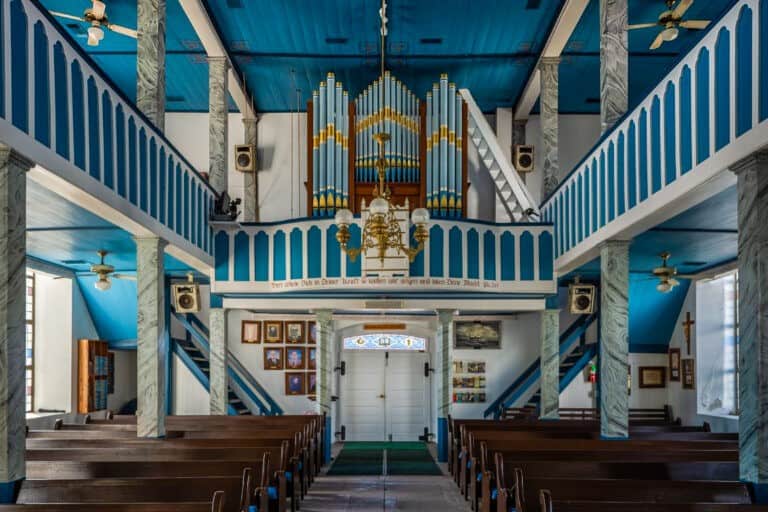

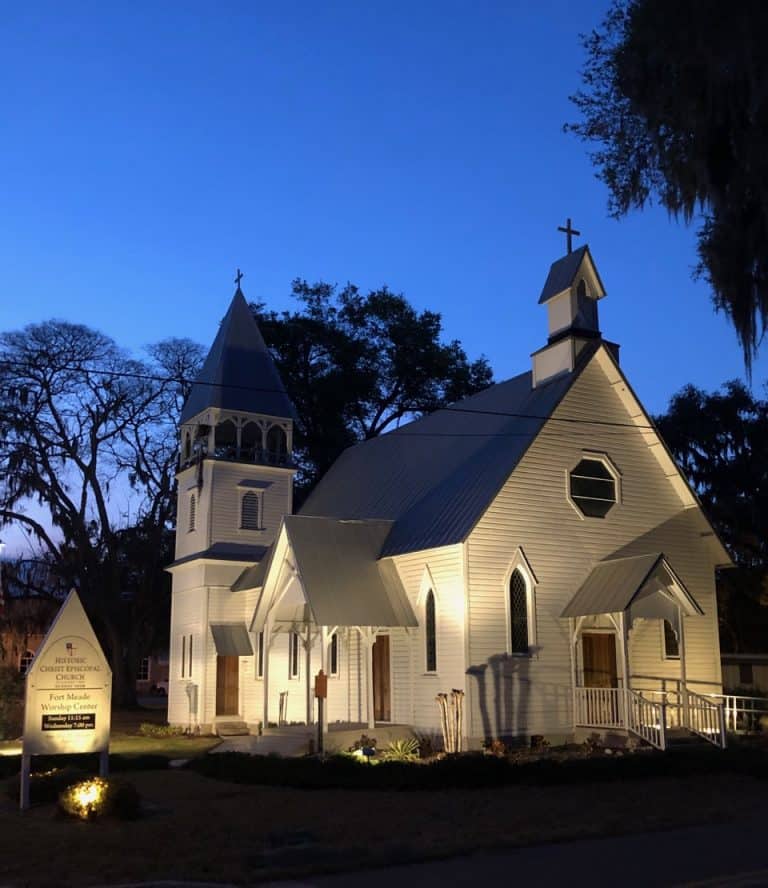
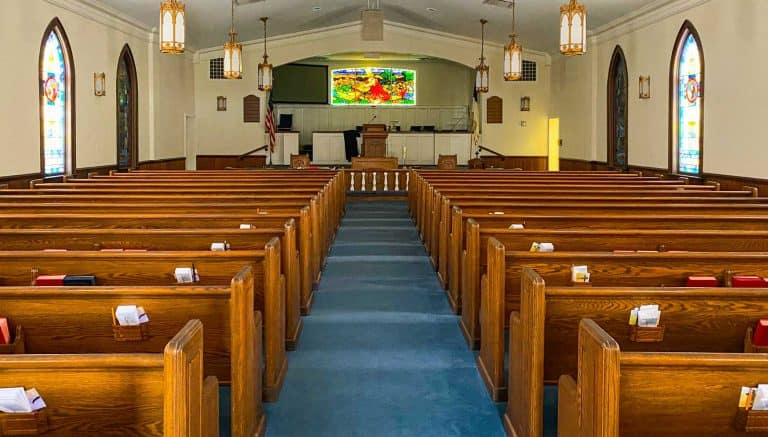
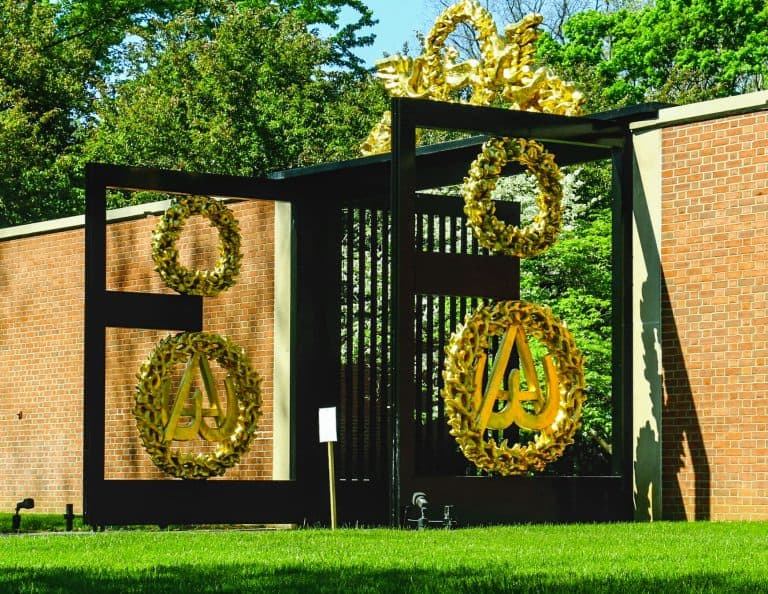
I really enjoyed reading this article of yours, and I am saving it for later. We are going to New Orleans new year for about 10 days, so I will come back to re-read your article again 🙂
I am glad you enjoyed the article. I hope you are able to visit the church and many others while you are in New Orleans. Thanks for reading!
I love historic architecture especially if is gothic Catholic churches they are so mystical and beautiful.
I love historic architecture as well and New Orleans is brimming with it. So glad you stopped by to read and share a thought!
Beautiful. Just beautiful. New Orleans has so much more going for it than food and parties (although those are great, too). It has some incredibly beautiful architecture.
Yes it does! Thanks for stopping by to read.
Mary
I didn’t visit any church during my visit to New Orleans and now I am regretting it. NO is full of history and those churches must be so beautiful, I hope I can come back one day!
You can take a walking tour along St Charles Avenue and it is very fascinating! Hope you return to visit the history lessons New Orleans offers!
This is a very insightful post on Historic New Orleans. I hope I’m opportuned to travel some day, I could visit Christ church and other beautiful historic churches close to the area. Thanks for sharing this
I hope you are able to visit someday and all that the city has to offer. Thanks for reading!
I love this! I have always wanted to visit New Orleans because of the culture there! And because I’m just a little bit obsessed with jazz and creativity ☺️? so thank you for sharing this!
Hope you get to visit New Orleans soon. It is a great city with so much to see and the jazz is amazing!
So much history and beauty in these older style buildings. Lovely to see.
We are so glad you enjoyed it!
I so enjoyed reading this and discovering something new (at least to me) that I did not know existed in the city I grew up in. I cannot wait to come back to New Orleans and visit this historic landmark.
So glad you learned something new about New Orleans! Its a great stop to add to your list!
Mary Armand is truly a gem to behold. Her writing is almost as beautiful as the charming spirit that embodies her – she is truly a gift to all who have the pleasure of knowing her. Her prose brings such imagery to one’s senses, a gifted writer! I enjoyed her capturing the history of the churches that line the streets on New Orleans! An easy enjoyable read! Thank you for sharing, publishing her work! All the best!
Thanks Angie, for your encouraging words! I am thrilled that you enjoyed the story! You are a good writer!
I really enjoyed reading the history behind the Christ Church Cathedral. Thank you for your in-depth article. It’s really nice to see how well preserved the Chruch still is and that despite all the hurricanes it survived. I really love the Gothic style buildings. Great photos.
It is amazing that the church has survived and its beauty is intact despite all it has faced. I hope you get to visit the church in person! Thanks for reading.
Wonderful article. I really enjoyed learning more about this part of Nola history. Thanks for sharing the story. Nice photos, Cameron.
Thanks for stopping by! It was a great story to research and I learned so much about New Orleans.
What a beautiful church and such a rich history to go along with it. I love that it is still a vibrant church today. Many historical churches are not.
It is such a beautiful church and serves as a beacon of hope in the city. Thanks for reading!
Such a beautiful cathedral. If I ever go visit New Orlean I will definetly check it out.
It is a great attraction to add to your list along with the many other churches and historical sites New Orleans offers. Thanks for reading!
what a gorgeous church! i love visiting historical churches. wasn’t it heartbreaking when we saw the burning of the church in D.C.?
I love to visit historical churches as well! It is heartbreaking when a church is burned. Thank you for reading!
It is as interesting to read about the history of churches as it is to see photos and read about the architecture. Great Job
Thank you for reading! I love reading and writing about historical churches and try to visit as many as I can.
Wow. What a beautiful church. And so much history. Thank you for sharing!
Thanks for stopping by! There are so many historical churches in the city if you ever get the change to visit!
I love reading history about particular places. I loved these pictures you have put up here.
Thank you and I love reading about history as well!
In-depth history lesson! Thanks for sharing. Many blessings to you!
Boma,
Many blessings to you…thanks for stopping by!
I want to see St. Charles Avenue in New Orleans. I’m a history buff so I’ll really appreciate this place. So nice to see it on photos.
Since you are a history buff, you will love the city! Thanks for reading!
I love new Orleans!! I visited here about 9 years ago whilst backpacking. had such a good time and the buildings are amazing
Emily,
So glad you have seen what New Orleans has to offer. I hope you get a chance to return. Thanks for reading!
Thanks for sharing the history of New Orleans. I only heard about this town from movies, and they take pride in their deep history and good food!
Blair, yes, the food and history are wonderful here! Thanks for stopping by!
We love New Orleans such a lovely place and it is nice that you have made a post about the place
Melanie,
Thanks for reading! So glad we share a mutual love for New Orleans!
What a beautiful church in historic New Orleans. We were in there last year, in the French Quarter. Thank you for sharing here, your pictures are beautiful! ❤
Donna,
Thanks for reading! If you make it back this way you will have to let me know!
I’ve always wanted to go to New Orleans. Never been there, but I feel it is full of history and culture that I would like to see. Your blog has given me a desire to want to go more. Well written.
Elizabeth, I’ve been to New Orleans several times for conferences, but I didn’t get to see many of the sights! I’m like you. I’d like to explore the culture and history. We can visit Mary of Butterfly Living while we’re there!
I was able to visit New Orleans for the first time in 2018 and it is a unique and beautiful place to visit. From getting on the trolley and taking a tour around the Garden District, to eating beignets at Cafe Du Monde in the French Quarter, it was all a joy to experience. Reading your post makes me look forward to taking another trip there.
Brandi,
Please come back and visit again! So glad you enjoyed this beautiful city!
I find historic churches fascinating and I’ve always been curious about the history and culture of New Orleans. After reading this article I’m even more excited about one day visiting Historic New Orleans. Thanks, Mary, for your beautiful description of the area!
Historic New Orleans has been on my list to visit for so many years. I know the French language down there is a lot different than the Quebecois I’m used to, but just knowing the French influence has always made me want to visit. However, I never knew the depth of the historical elements of places such as places of worship! This was a great read that drew me in from the beginning, and I learned so much. Thanks for sharing New Orleans with us, Mary!
Love this history! And love New Orleans! We live in the Florida panhandle & we’re planning a family trip but postponed due to COVID. Hoping for a trek in late summer or early fall! It’s true that New Orleans has lots to offer.
If you take any church photos, please send to us! We’ll feature the photo on Instagram and Facebook.
This totally makes me want to visit so I can see this beautiful church in person! Love the history behind it as well.
What a wonderful history lesson and I just love pictures of old gothic style churches! Next time I am in New Orleans, I will definitely spend more time discovering those beautiful churches!
So cool! I’ll definitely be adding this church to our list of things to see when we finally make it to New Orleans! And I’ll save your blog to read before we go 🙂
What a beautiful church in historic New Orleans! I love history and you included a great piece of history with these beautiful photos of the churches!
I really loved visiting historical architecture like this. I would love to be there in New Orleans someday.